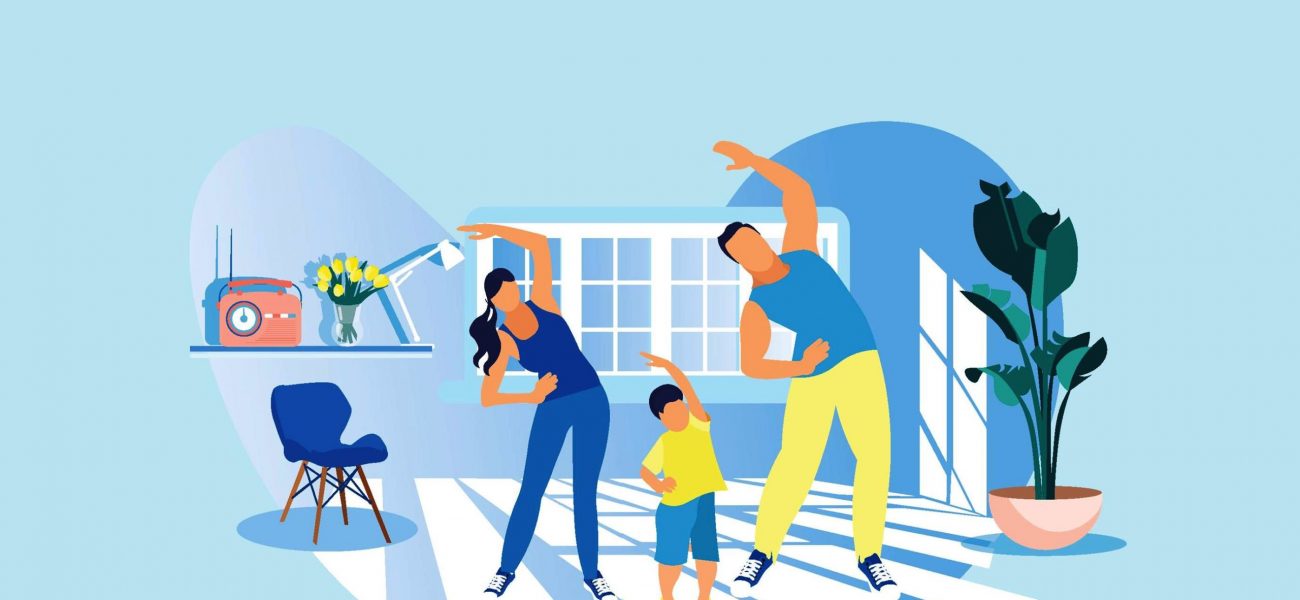Virtual? Inclusive? What does the future of wellness look like for the next generation? We asked the leading experts in health for their thoughts…
Wellness has come a long way since diet shakes and fat-burning pills. It’s been an evolution; from leotard-led workouts to super green juices – but what’s in store for the generations to come? More of the same? Or will the world of wellness turn on its head? And, what habits and sage advice can we pass down to ensure that the next generation have it better than us?
Personalised tech
With many of us already owning a fitness watch to track and monitor our daily steps, tech giants are trying to anticipate what we want next. With murmurs of new watches featuring ultraviolet exposure (warning users to get out of the sun to avoid skin damage); hydration level monitors and an ‘emotion forecaster’, wearable tech will advance phenomenally. “In the next couple of decades, we will probably see an enormous increase in personalised nutrition and health,” says Claire Barnes, nutritional therapist (biokult.com). “While the technology is already available to test your own DNA and microbial profiles, we are likely to see this becoming standard practice in the coming years, including recommendations such as which foods to eat and which ones to avoid, which supplements to take, as well as which sports are most suitable for the individual.”
The dark side of tech
Look at the news and we can see that our tech isn’t always good for us. On average, internet users aged 16 and over spend more than 20 hours online each week and more than 70 percent have a social networking profile (mentalhealth.org). How then, with tech advancing and growing in popularity year-on-year, can we cultivate a future that keeps our children safe? “Children learn behaviours by observing their parents,” explains Emily Cooke, a psychologist at NHSbacked wellbeing platform, Thrive (thrive.uk.com). “Try and model good behaviours with consumption of tech, nutrition, exercise and sleep – these are all essential for ensuring healthy physical and mental wellbeing. Get into a good bedtime routine to help your child wind down and avoid electronic devices like phones or iPads close to bedtime.” A sure-fire way to make sure our children aren’t plugged into the digital world is to push them outside into the real one. “Children should be outside as much as possible to combat the effects of tech, away from screens, and in touch with the physical world,” says Claire. “Allowing them to connect with nature is important for their current health, their future health and for the future of the planet. Being outside, playing in the mud and being around animals all help to increase children’s microbial exposure, which also helps with their developing immune system and their susceptibility to health conditions later on in life.”
Sleep: Streamlined
The global sleep industry is worth £391 billion, according to the Global Wellness Report of 2020; however, we’re still not sleeping. The report discusses how the future of sleep will shift, with: “light becoming a central pillar of wellness, from circadian lighting and diets to apps that use timed light doses to crush jet lag.”
For the future generation, it’s important that we highlight the necessity of not just sleep, but good sleep. “For the younger generations, what we don’t want is for them to see lack of sleep as a badge of honour,” says sleep expert Ewan Jones, (echor.co). “There is nothing more important than sleep for positive effects on mental health, productivity and general wellbeing, and it’s so important that our children grow up knowing its value.”
Age of accessibility
It probably won’t come as too much of a surprise that many of us have taken our fitness routines ‘virtual’ in 2020. “This year these tools became more of a necessity than just a useful addition to our lives,” says Amber Gamble, studio manager and coach at F45 Chelsea, (f45training.co.uk/chelseauk). “Having interactive gym equipment at home will become a household purchase similar to that of a coffee machine.”
Looking ahead
Our experts share what they’d like to see happen in the next 20 years…
In the future I would like to see…
“More people having regular therapy,” says Dr Elena Touroni, consultant psychologist, (myonlinetherapy.com). “Everyone can benefit from therapy, and I hope that people will begin to see it as preventative as well as curative. The earlier you start this process, the better. Starting this process when you’re young, for example, your early 20s, provides you with an ‘emotional map’ of your tendencies and patterns. When you have an understanding of your early experiences and what you might be drawn towards because of them, you have the power to make decisions that serve you best – instead of being driven by subconscious conditioning.”
In the future I would like to see…
“A fairer healthcare system,”says Dr Myra Altman, (joinmodernhealth.com). “It’s important to highlight the ongoing and extensive racial and economic disparities in mental and physical health. People of colour still have limited access to quality care and experience stigma and racism in the healthcare system. It is critical that we all take action to reduce these disparities in care, so that in 20 years, wellness is something that is available to everyone.”
In the future I would like to see….
“The importance of kindness being passed down,” says mental health expert Dr Mark Winwood, (axahealth.co.uk). “Science shows that acts of kindness not only benefits others, but they also improve our own mental health. A phenomenon known as ‘the helper’s high’ causes a boost of serotonin and dopamine levels, responsible for feelings of satisfaction, reward and wellbeing. This simple but effective practice is something children can learn by observing your gestures and behaviour. Volunteering or charity work can also give children first-hand experience in important life skills, such as team building, compassion and by helping those in need.”



















